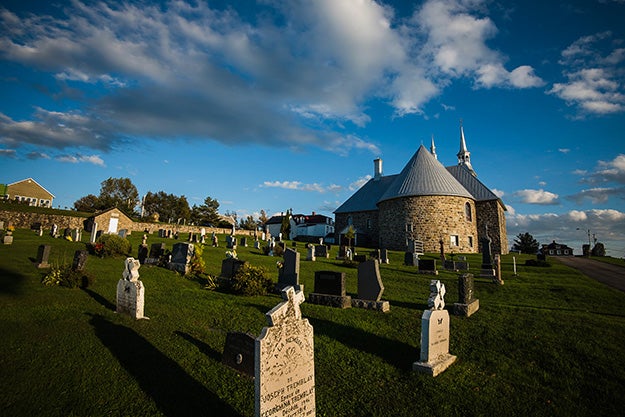Mentor Series: Jim Coleman Finds Layers in the Landscape
Sometimes your best shot is not the obvious one

Hunting for photo opportunities, Jim Coleman, a civil and environmental engineer from Coeur d’Alene, Idaho, and wife Jerre drove around the outskirts of Quebec City in advance of a Mentor Series exploration of that part of Canada. As the couple drove through the Saint Lawrence Seaway town of Les Éboulements, the beautiful late-afternoon light convinced them that a great sunset was in the offing. Their quest? Finding a suitable foreground for it.
This church and the clouds above made them stop. “From the front it was very plain. The back of the church, however, was surrounded by a well-kept cemetery,” Coleman remembers. After hiking around the structure and assaying the graveyard, they had second thoughts.
“Looking west over the gravestones toward the setting sun, I realized that the surrounding area wasn’t going to work for the picture that I had in mind,” says Coleman. So they turned around to head back to the car—and saw the picture. He was struck by the soft, strafing light, the green grass, deeply blue sky, the shadows cast by the gravestones, and the church’s unique architecture in the distance.
One of the lessons he’s taken from his five Mentor Series trips came into play here: A good landscape needs foreground, middle-ground, and background interest. The cemetery had all three. “All parts of the scene seemed to jump out at me,” he recalls. There was character in the gravestones, color in the grass and sky, and structure in the church—a perfect recipe.
Another lesson that came into play: Follow the light. That’s what the process of photography is all about. If a landscape’s lighting isn’t good, your picture probably won’t be either.
For this avid shooter, photography is more than pictures. “Carrying a camera forces me to really look at a scene. The geology, buildings, history, and people are fascinating,” he says. Photography serves as a gateway to understanding, as well as seeing, the world.